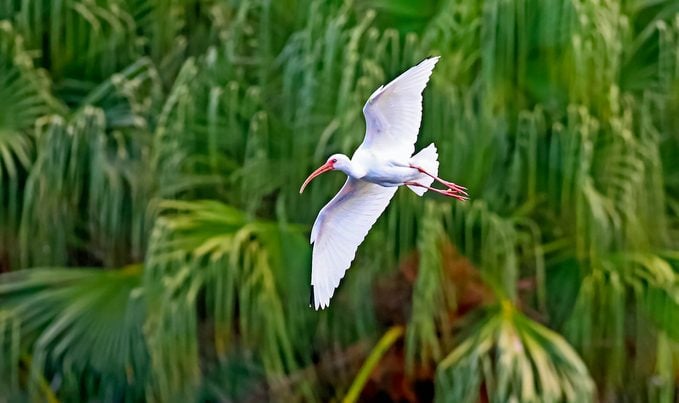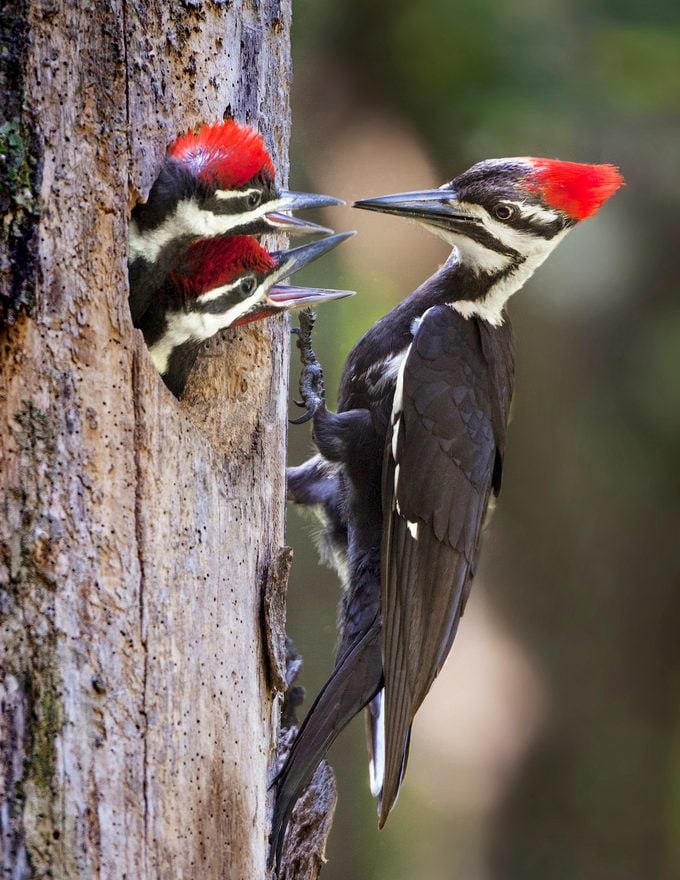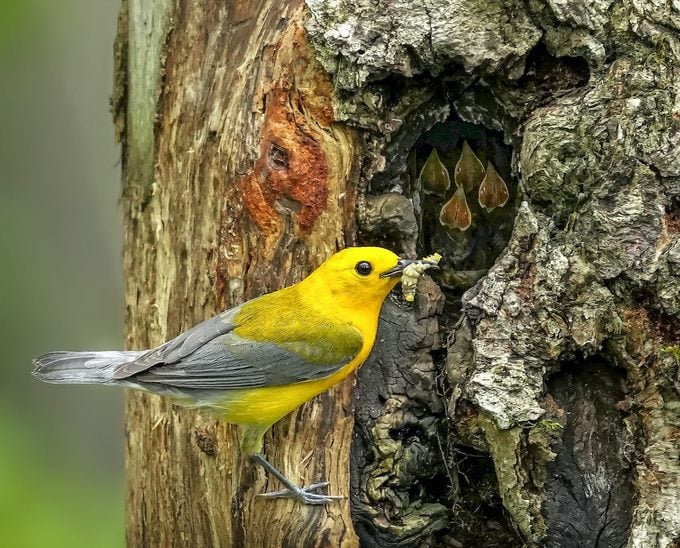Birds in Swamps: Where Woods Meet Water
Updated: Jul. 24, 2023
If you think swamps are stinky or boring, think again. Learn why swamps are vital habitats, and why birds choose to call them home.
Banish thoughts of deep shadows, dark water and lurking creatures. There’s a lot more to swamps than you might think. Found in flood plains along streams and rivers, swamps provide food control and natural filtration to keep local ecosystems healthy. Not to mention, there are plenty of birds in swamps and other animals live and thrive in these haunts.
But even the most celebrated swamps have identity issues. The Great Dismal Swamp, for example, is a name that may not entice visitors, but Deloras Freeman, the visitor services manager, says many folks enjoy the national wildlife refuge in Virginia and North Carolina. “The birders start showing up about a week before the warblers do in the spring,” she says.
If the thought of wading through standing water doesn’t appeal to you, many parks and refuges offer boardwalks so you can experience the swamps and keep your feet dry. And once you explore a swamp, you’ll glimpse some of nature’s most stunning critters, especially birds uniquely suited for this habitat of woods and water.
Birds in Swamps: Wading Birds

Forget about walking along the boardwalk planks. Wading birds don’t need ’em. Their long legs work just fine and are perfect for stalking fish in the backwaters. Although the waters are stained the color of tea, they aren’t muddy or murky, which means that fish-eating birds can easily spot and scoop up a meal in the currents that flow slowly here.
Wood storks are the pickiest of the stand-and-wait crew. They need the water to be just right: not too deep or shallow. Audubon’s Corkscrew Swamp Sanctuary in southern Florida hosts nesting pairs of wood storks in late winter when conditions are driest and the fish most concentrated.
Along the coastal southeastern states, white ibis forage among the cypress and mangrove trees. Unlike their name, young white ibises are mostly brown, but the adults are white as cotton. Similar in size and color to snowy egrets and immature little blue herons, you can identify white ibises by their reddish pink bills and legs. They use their down-curved bills to probe for invertebrates in the mud or catch insects.
Discover 10 egrets and herons found in North America.
Birds in Swamps: Woodpeckers

Although the vast expanses of flooded timberlands in the Southeast remain mysterious and underexplored, few people hold out hope that the presumably extinct ivory-billed woodpecker survives there. But, only slightly smaller than the ivory-billed, pileated woodpeckers do inhabit the swamps, along with the more familiar woodpecker species like downy, hairy and red-bellied.
Historically, the wet nature of swamps made logging efforts extremely difficult. Areas that weren’t diked, drained and harvested now hold some of the largest trees. Nearly the size of crows, pileated woodpeckers require big trees for their rectangular-shaped nest cavities, so they’re naturally drawn to setting up shop in swampy areas.
These are 11 types of woodpeckers all birders should know.
Birds in Swamps: Warblers

Woodpeckers are known for hammering out holes, but once they leave their homemade tree houses behind, sunny warblers with blue wings take up residence in the woodpeckers’ excavated apartments. As well as in tree cavities, these stunning prothonotary warblers nest in bird boxes. “Prothonotary warblers nest in areas where people can see them,” says Deloras. Found in eastern swamps from central Florida to southern Minnesota, they use boxes placed 4 to 12 feet high that look out over the water.
The Great Dismal Swamp has less standing water than other places like Okefenokee or the Everglades. Instead, the seasonally flooded woodland provides a forest floor where Swainson’s warblers skulk along. “The thick deciduous forest can make it hard to see the birds in summer,” Deloras says. But birding by ear alone can be especially rewarding, she says, and spring and fall migration brings an explosion of bird activity to these strange but lively habitats.
Swamps for Birding
Canoes and kayak trails are available in some locations, and hikes through swamps are possible, thanks to boardwalks, trails and dikes.
- Audubon’s Corkscrew Swamp Sanctuary, Florida
- Okefenokee National Wildlife Refuge, Georgia and Florida
- Congaree National Park, South Carolina
- Great Dismal Swamp National Wildlife Refuge, Virginia and North Carolina
- Blackwater National Wildlife Refuge, Maryland
- Great Swamp National Wildlife Refuge, New Jersey




















